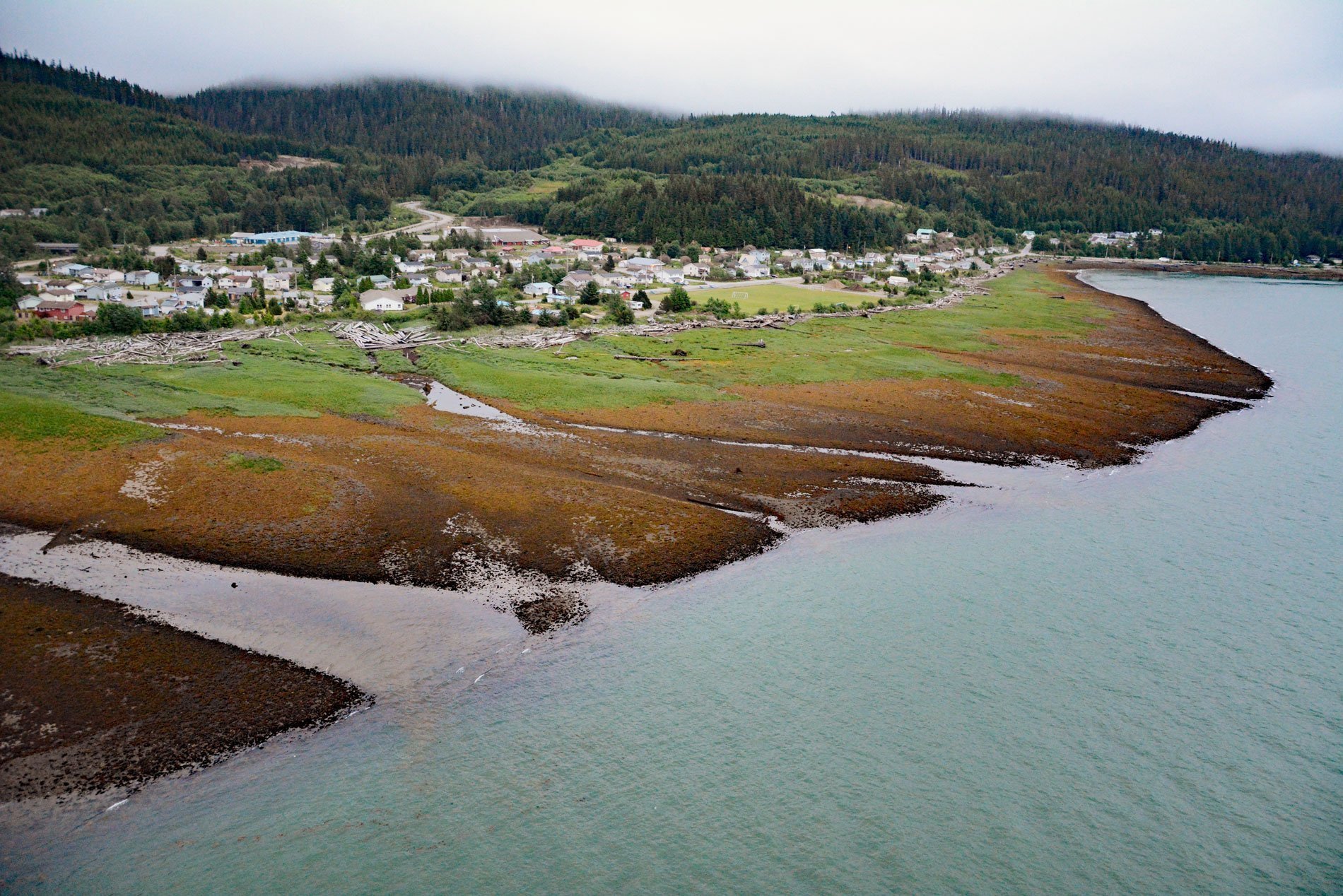Kitamaat Village is located on the eastern shore of the Kitimat Arm extension of Douglas Channel, about 71 miles (115 km) southeast of Prince Rupert and 6 miles (10 km) south of the community of Kitimat, British Columbia. The village was formerly named Kitimat Mission and is the principal community of the Haisla people and their government, the Haisla Nation. Douglas Channel is one of the principal inlets of the British Columbia Coast. The channel is named in honor of Sir James Douglas, the first governor of the Colony of British Columbia. Douglas Channel is a busy shipping artery because of the aluminum smelter at Kitimat, where bauxite is imported and smelted aluminum exported. A major expansion of the port as a terminal for the export of liquefied natural gas is currently under construction and estimated to be operational in 2025.
The contemporary Haisla Nation is an amalgamation of 2 ancient bands, the Kitamaat of upper Douglas Channel and Devastation Channel, and the Kitlope of upper Princess Royal Channel and Gardner Canal. Historically, each controlled its own resources within a general traditional territory, and each occupied an independent winter village. The remoteness of the villages enforced isolation of the Kitamaat and Kitlope until the 1890s when a mission and residential school were established. Epidemics and endemic diseases brought by Europeans reduced the native population, and after the 1918 influenza pandemic, fewer than 300 people survived, but they formed linkages and eventually began to occupy the same village. Missionaries and government agents exerted pressure to abandon feasts, dancing, and potlatches, traditional communal houses were pulled down, and children were forbidden to speak the aboriginal language. After several decades of strain and dislocation, a culture has emerged that combines elements of both their traditional heritage and Euro-Canadian culture.
Kitamaat was the location of the Kitamaat Indian Residential School that was operated between 1883 and 1941. The Canadian Indian residential school system was a network of mandatory boarding schools for Indigenous peoples. The network was funded by the Canadian government’s Department of Indian Affairs and administered by Christian churches. The Methodist Church ran the Kitimat school. The school system was created to remove Indigenous children from the influence of their own culture and assimilate them into the dominant Canadian culture. The Kitamaat school reported few cases of abuse but suffered the same poor conditions and difficult regime as other schools. Read more here and here. Explore more of Kitamaat Village here:

